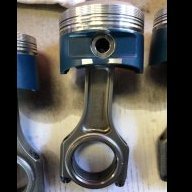RB26 crank modification
Announcements
-
Similar Content
-
Latest Posts
-
By joshuaho96 · Posted
94 RON E10 beats the E10 we get out here, which starts at 87 AKI/~91 RON and goes up to all of 91 AKI/~95 RON. E0 doesn't even exist at most servos and when it does it's usually appallingly expensive and no more than 88-90 AKI. -
By joshuaho96 · Posted
R12 is probably still out there somewhere, at some ridiculous price. eBay also banned the sale of these older refrigerants on their platform so it's harder to connect to a seller now. -
Thank you! The matching touches really ties it all in. If/when I redo the whole car it would likely be the same colour I did the Engine Bay/Brakes/Cam covers in 2018. or something adjacent
-
By soviet_merlin · Posted
Love the purple accents in the car! It all comes together really well with the cage, boss kit and other little bits. Nice work all around! What colour are you thinking for paint? -
Looking at finally painting and installing my R32 GTR wing I bought back in 2018. I got two quotes: Quote 1: $880 includes: wing, spare boot, holes welded up prep/paint. Pro: full boot with wing AND hole-less boot with lip i can swap between Con: $$ Quote 2: $330 wing only. Pro: cheaper Con: lose my (relatively) rare no holes sedan boot Also to consider I do plan on painting my whole car at some point "soon" (been saying that since 2018) Anyway Enjoy these All Japan Day 2025 pictures of my 4 door, still rocking the Calsonic Livery! Rolling in Interior shot Matching Peer Pressure Racing overalls are pretty cute ngl. This year was a hard 1990 cut so I got to be over with all the older cool stuff Next to arguably the best car there. A mighty S-Cargo
-





Recommended Posts
Create an account or sign in to comment
You need to be a member in order to leave a comment
Create an account
Sign up for a new account in our community. It's easy!
Register a new accountSign in
Already have an account? Sign in here.
Sign In Now